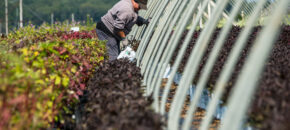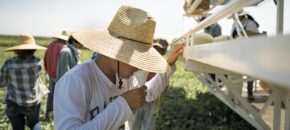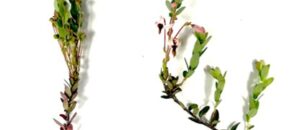Peach: Bacterial Spot: Copper formulations should be used starting at petal fall to suppress bacterial spot. Generally we recommend starting at 0.5 ozs metallic copper and gradually lowering the rate as the season progresses. The rate applied will depend on the formulation. Dr. Lalancette published a chart listing common copper formulations and rates for peach […]
Continue reading...Cucurbit powdery mildew control in 2024
Cucurbit powdery mildew (CPM), caused by Podosphaera xanthii, is one the most important diseases of cucurbit crops throughout the world. The pathogen is an obligate parasite, just like cucurbit downy mildew, meaning it needs a living host in order to survive. In northern regions that have a killing frost in the fall the pathogen will […]
Continue reading...TONIGHT: Webinar on Heat Stress in Agriculture

The Rutgers Farm Health and Safety Working Group, in partnership with New Jersey Farm Bureau, invites you to a two-part webinar series titled “Don’t Sweat Heat Stress in Agriculture”. The first webinar will take place tonight! Wednesday, June 5 from 7:00-8:00 PM An introduction to heat stress issues in agriculture. We will also share tools […]
Continue reading...Preparing for important fungal diseases in Asparagus during the summer.
Asparagus growers should consider scouting their fields regularly during the summer months for foliar disease development. Important pathogens that growers need to scout for on a regular basis include Purple spot, Cercospora, and Rust.
Continue reading...Beat the Heat: Clothing Matters

Evaporation of sweat from skin is the body’s primary mode of temperature regulation on hot days. Clothing can impact heat and sweat production, as well as the rate of evaporation, so clothing decisions are important to prevent heat stress. Choose lightweight, loose-fitting clothing made of a breathable fabric like cotton which allows sweat to […]
Continue reading...Blunt-nosed Leafhoppers in Cranberries – 2024

New Jersey cranberry growers are increasingly concerned about rising blunt-nosed leafhopper (BNLH) populations. This rise is attributed to changes in pest management strategies, such as the adoption of new reduced-risk products and decreased use of broad-spectrum insecticides, as well as the expansion of high-yielding varieties that seem more susceptible. BNLH is particularly worrisome because it […]
Continue reading...